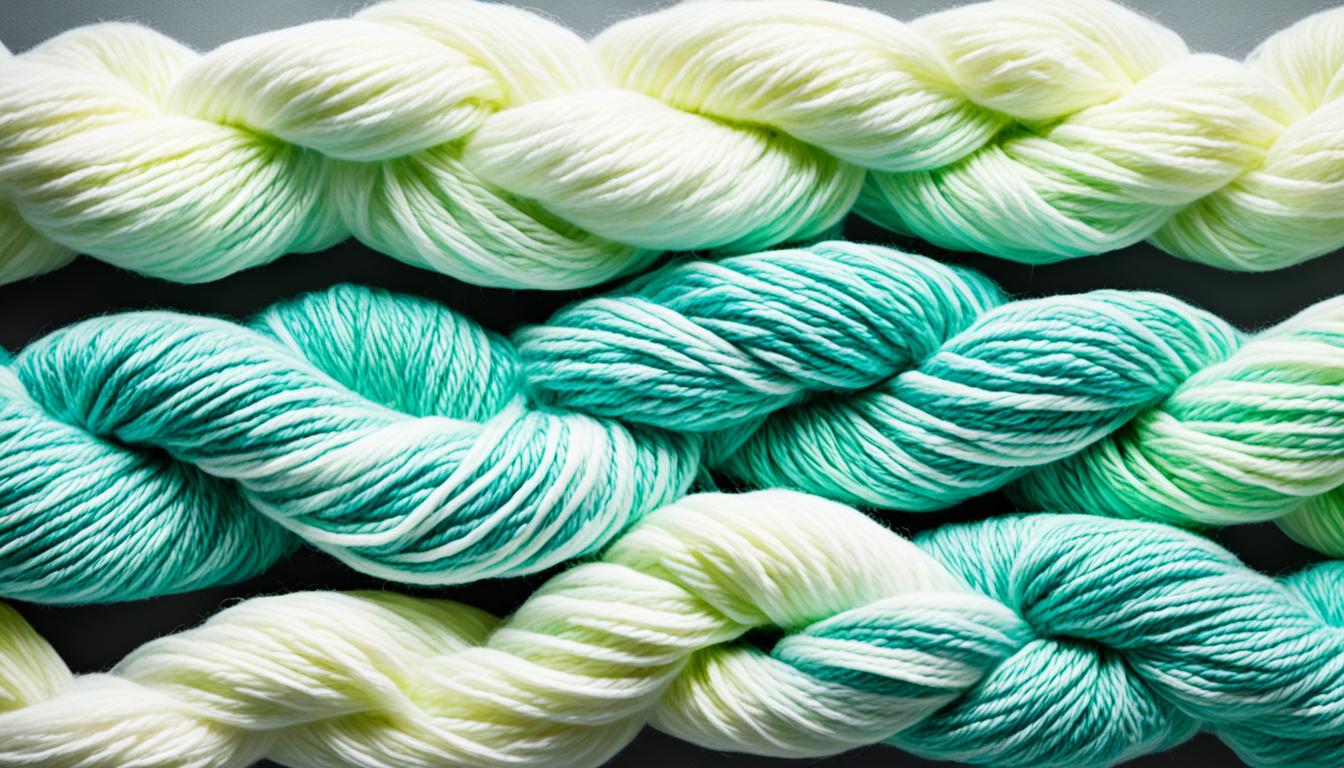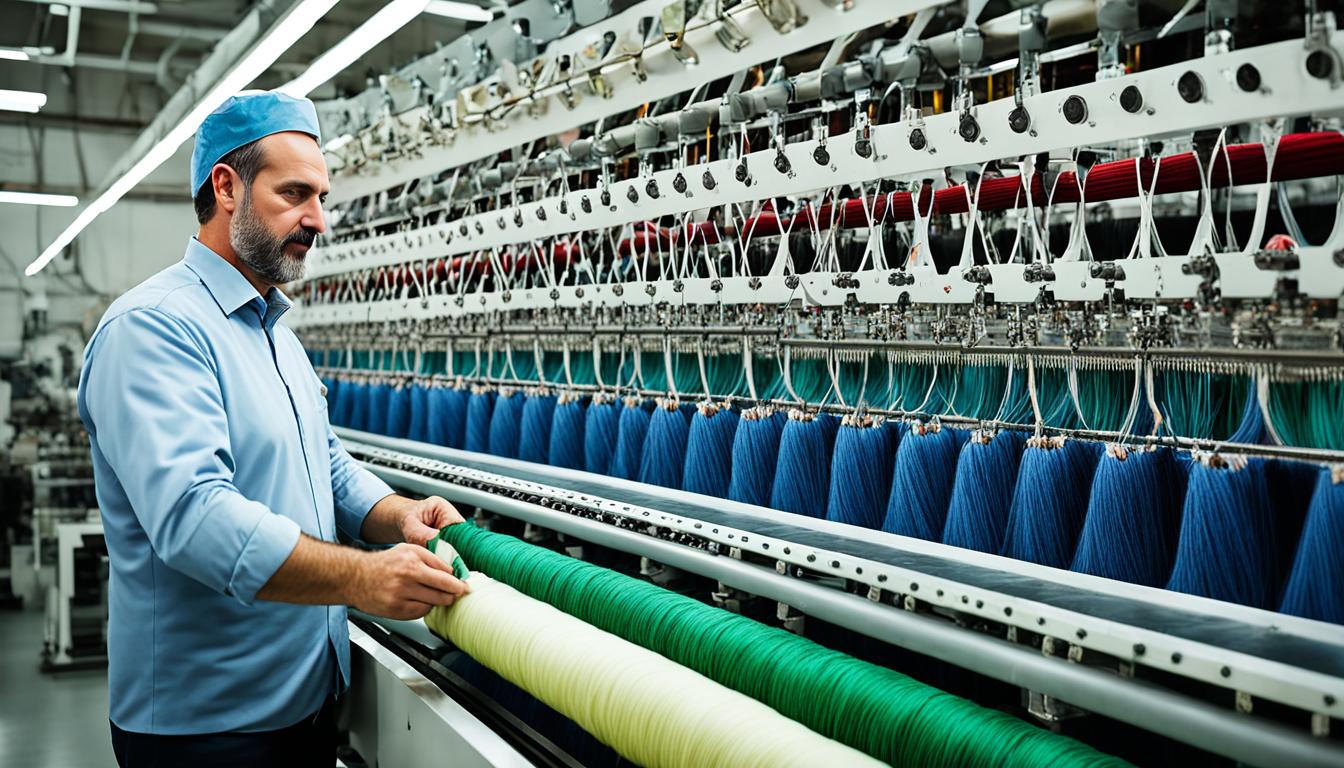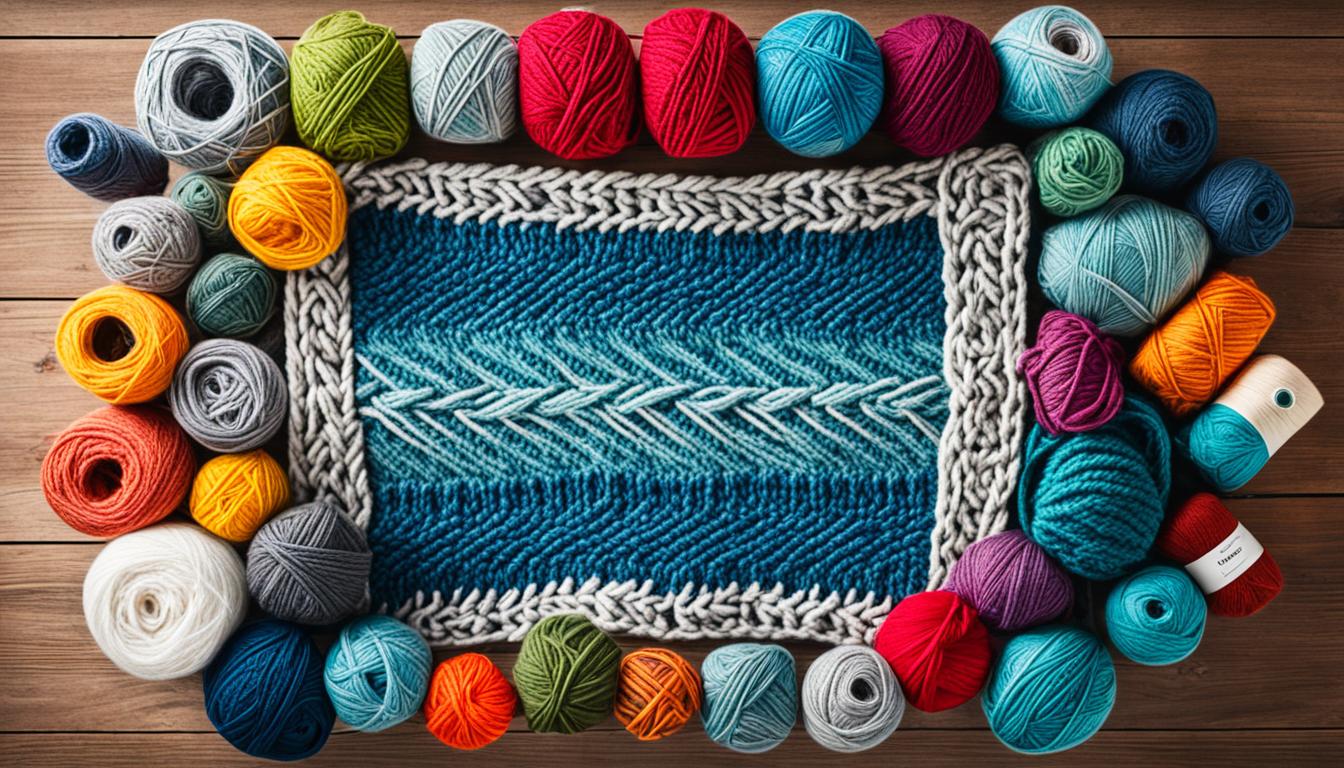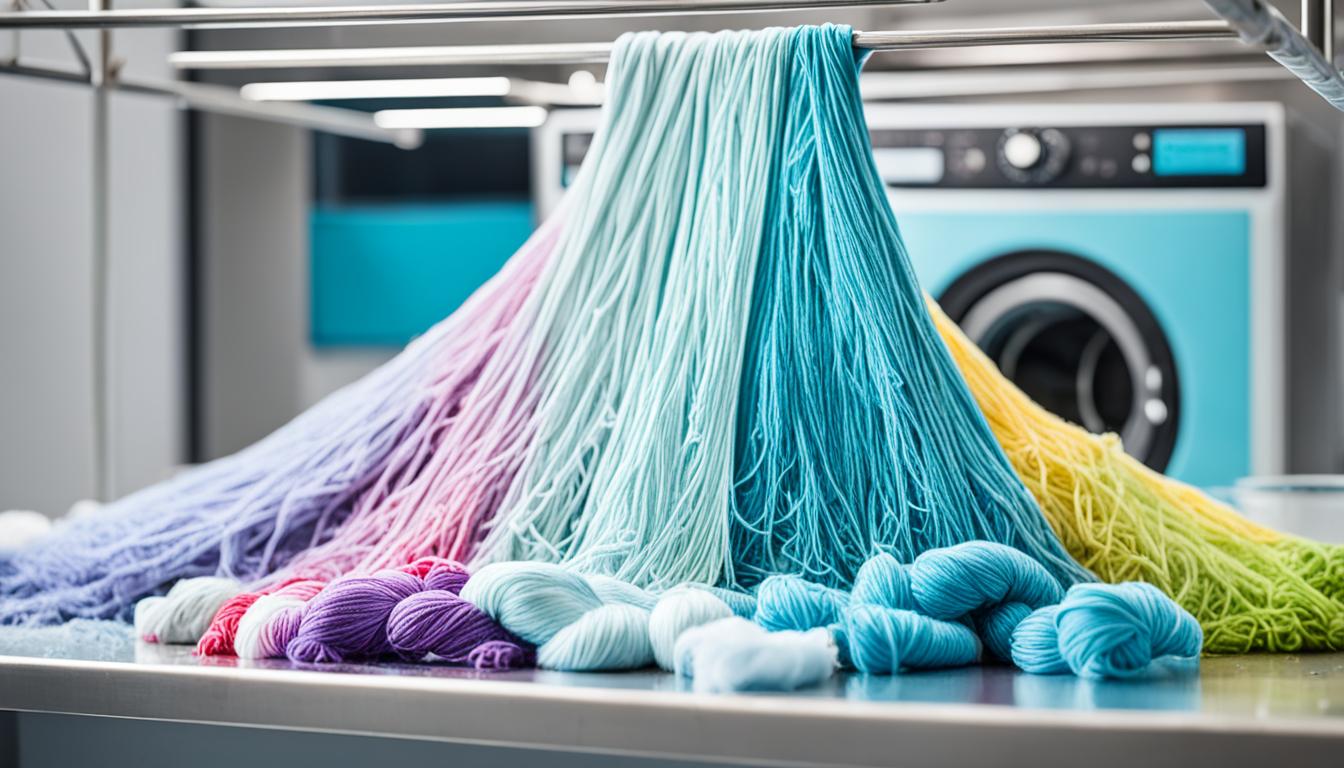Have you ever thought about whether acrylic is considered a yarn? It may appear to be a straightforward inquiry, but the response could be unexpected. In this article, we will delve into the realm of acrylic yarn, examining its characteristics, and contrasting it with other yarn varieties. Come along as we delve into the reality of acrylic yarn and unveil its mysteries.
Key Takeaways:
- Acrylic yarn is a synthetic fiber used in various craft projects.
- It is more affordable and easier to care for compared to natural fibers like wool.
- Acrylic yarn is not as breathable as wool but offers a wide range of vibrant color options.
- Consider your project requirements and personal preferences when choosing between acrylic and wool yarn.
- Understanding the properties of different yarns can help you make informed decisions and create stunning creations.
How to Identify Acrylic vs Wool Yarn
When it comes to distinguishing between acrylic and wool yarn, there are several methods that can help you determine the fiber content. Here are some practical ways to identify whether you’re working with acrylic or wool:
1. Check the Label
One of the simplest and most reliable ways to identify the type of yarn is by checking the label. Most yarn skeins will have a label that clearly states the fiber content. Look for keywords such as “acrylic” or “wool” to determine the yarn’s composition.
2. Use Your Sense of Touch
Feel the yarn with your hands to assess its texture. Acrylic yarn tends to have a smoother, synthetic feel, while wool yarn tends to be softer and more natural. However, keep in mind that not all acrylic yarns will feel rough, and some soft acrylic yarns can mimic the texture of wool.
3. Observe the Appearance
Take a close look at the yarn’s appearance. Wool yarn often has a more matte finish, while acrylic yarn tends to be shinier. This visual difference can be helpful in identifying the fiber content.
4. Employ Additional Testing Techniques
If you’re still uncertain, there are other testing methods you can employ to determine the yarn’s composition:
- The smell test: Some people claim that wool has a distinct smell, while acrylic yarns do not.
- The burn test: Burn a small fiber of the yarn and observe the flame and smell. Wool generally has a smell similar to burning hair, while acrylic yarn has a smell similar to burning plastic.
- The break test: Acrylic yarn may break cleanly, while wool yarn can often break with fibers that fray or unravel.
- The felt test: Wool yarn has the ability to felt and become denser when agitated in hot water. Acrylic yarn is not capable of felting.
- The bleach test: Apply a small amount of bleach to the yarn. Wool yarn will disintegrate due to the protein content, while acrylic yarn will remain unaffected.
By using these methods, you can confidently determine whether you’re working with acrylic or wool yarn for your crafting projects.
| Methods | Pros | Cons |
|---|---|---|
| Label Check | Reliable and easy to identify yarn composition. | Labels may be missing or unreadable. |
| Sense of Touch | Texture can provide clues about fiber content. | Not always accurate, as some acrylic yarns may feel soft. |
| Appearance | Wool yarn often has a more matte appearance. | Visual distinction may not be obvious in all cases. |
| Additional Testing | Can provide definitive results. | Testing methods require caution and may damage the yarn. |
Benefits of Acrylic Yarn
Acrylic yarn offers a range of advantages and benefits that make it a top choice for crafters.
- Easy maintenance: One of the key benefits of acrylic yarn is its easy care. It can be machine washed and dried without losing its shape, making it a convenient choice for busy crafters.
- Vibrant color options: Acrylic yarn is known for its wide range of vibrant color options. Whether you’re creating garments, accessories, or home decor items, acrylic yarn allows you to experiment with various color combinations and bring your creative vision to life.
- Allergy friendly: While it is not hypoallergenic, acrylic yarn is less likely to cause allergies compared to wool. This makes it a suitable choice for individuals with sensitive skin or allergies to natural fibers.
- Affordability: Acrylic yarn is more affordable than wool, making it accessible to craft enthusiasts on a budget. It allows you to indulge in your favorite knitting or crochet projects without breaking the bank.
Whether you’re a beginner or an experienced crafter, acrylic yarn offers a combination of practicality, versatility, and affordability that makes it an excellent choice for a wide range of projects.
| Benefits | Description |
|---|---|
| Easy maintenance | Machine washable and dryable |
| Vibrant color options | Wide range of vibrant colors |
| Allergy friendly | Less likely to cause allergies compared to wool |
| Affordability | More budget-friendly than wool |
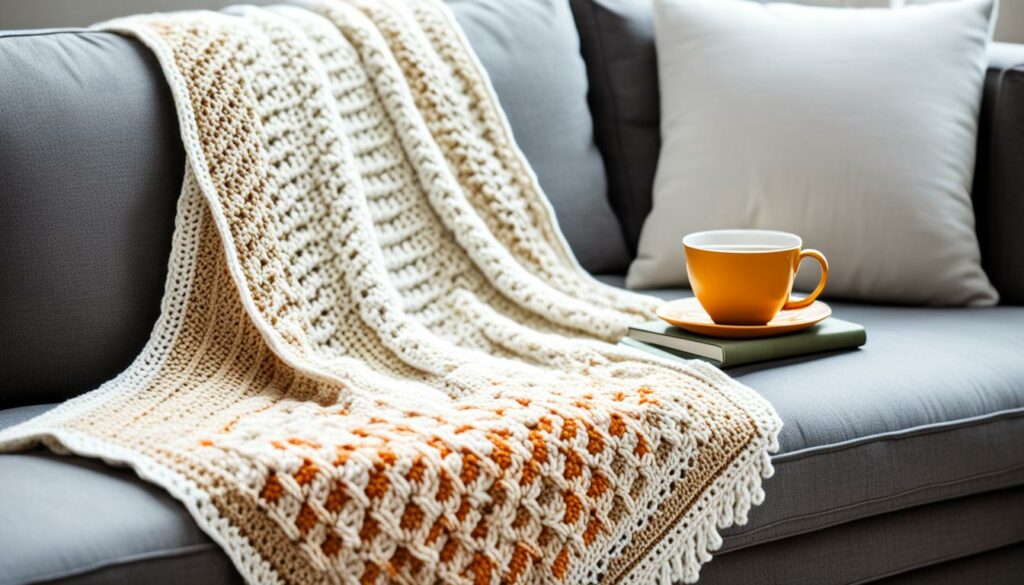
Acrylic yarn provides endless possibilities for your creative projects while offering practical benefits. Its easy maintenance, vibrant colors, allergy-friendliness, and affordability make it a go-to choice for both beginners and experienced crafters.
Drawbacks of Acrylic Yarn
While acrylic yarn has numerous benefits, it’s essential to consider its drawbacks when choosing the right yarn for your project. One significant concern is the sustainability of acrylic yarn. As a petroleum-derived synthetic fiber, it contributes to environmental issues associated with non-renewable resources.
Another drawback of acrylic yarn is its breathability. Unlike wool, acrylic yarn is less breathable, making it uncomfortable to wear in certain garments, especially in warmer climates or during physical activities.
Moreover, acrylic yarn has limited heat and water resistance. It has a lower tolerance for high temperatures, and exposure to heat can cause it to melt. Additionally, acrylic yarn does not absorb water well, which can be problematic in projects that require moisture management.
Consider these drawbacks when deciding whether to use acrylic yarn for your specific projects. It’s important to weigh the sustainability, breathability, and heat and water resistance factors against the advantages of affordability and easy maintenance.
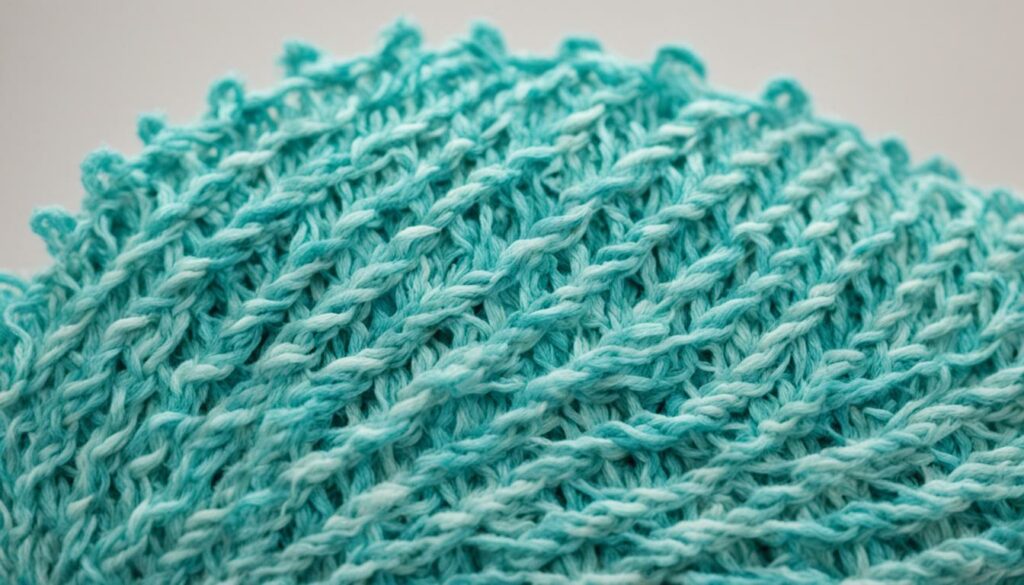
“Despite being affordable and easy to care for, acrylic yarn lacks the sustainability, breathability, and heat and water resistance that natural fibers like wool offer.”
Advantages of Wool Yarn
When it comes to choosing the right yarn for your craft projects, wool yarn offers several advantages that make it a popular choice among crafters. Let’s explore the key benefits of using wool yarn.
Durability
One of the standout features of wool yarn is its exceptional durability. Unlike acrylic yarn, which may wear down over time, wool yarn has the ability to withstand everyday use and often outlasts other materials. This makes it a reliable option for projects that require long-lasting and sturdy creations.
Shape Retention
Another advantage of wool yarn is its impressive shape retention. Even after being stretched or manipulated during the crafting process, wool yarn has the remarkable ability to bounce back to its original shape. This gives your finished projects a professional and polished look while ensuring that they maintain their intended form over time.
Warmth
Wool yarn is well-known for its excellent insulating properties, making it a go-to option for cozy winter garments and accessories. The natural fibers in wool create small air pockets that trap heat and keep you warm. Whether you’re knitting a sweater, hat, or scarf, wool yarn provides the cozy comfort you need during chilly seasons.
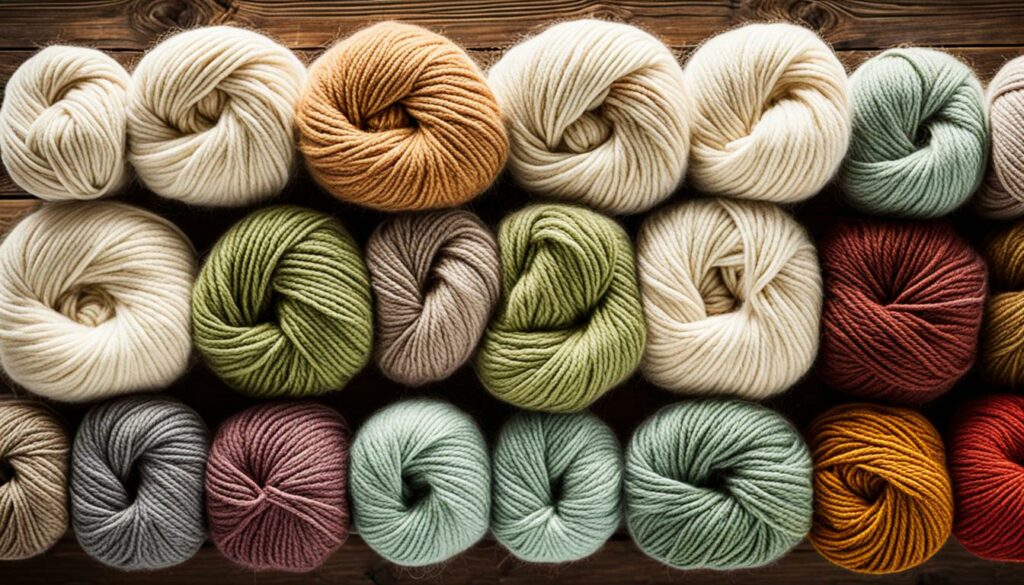
With its durability, shape retention, and warmth, wool yarn offers a range of advantages that make it a versatile and reliable choice for your crafting needs. Whether you’re a beginner or an experienced crafter, wool yarn can help you create beautiful and long-lasting creations that stand the test of time.
Disadvantages of Wool Yarn
While wool yarn offers many advantages, it’s important to be aware of its disadvantages before deciding to use it for your project. Here are a few drawbacks to consider:
- Limited dye options for wool yarn: Unlike acrylic yarn, wool has a more limited range of vibrant colors available for dyeing. This can make it challenging to find the exact shade you desire for your project.
- Wool yarn maintenance: Wool requires special care to ensure its longevity. Hand-washing is often recommended to prevent shrinking, felting, or damage. Additionally, wool should be protected from strong light to prevent fading.
- Price of wool yarn: Wool yarn tends to be more expensive than acrylic yarn, especially when considering higher-end wool options. This cost can add up, particularly for larger or more complex projects.
Despite these disadvantages, wool yarn’s natural fibers and unique properties continue to make it a popular choice among crafters. When considering whether to use wool yarn, it’s essential to weigh these drawbacks against the benefits and suitability for your specific project.
Comparison of Wool Yarn and Acrylic Yarn
| Factors | Wool Yarn | Acrylic Yarn |
|---|---|---|
| Color options | Limited range for dyeing | Wide range of vibrant colors |
| Maintenance | Special care required, including hand-washing and protection from strong light | Machine washable and easy to care for |
| Price | More expensive | More affordable |
As seen in the comparison table, wool yarn does have some limitations in terms of dye options and maintenance requirements when compared to acrylic yarn. However, it’s important to note that wool yarn offers unique qualities and benefits that may outweigh these disadvantages based on the specific needs of your project.
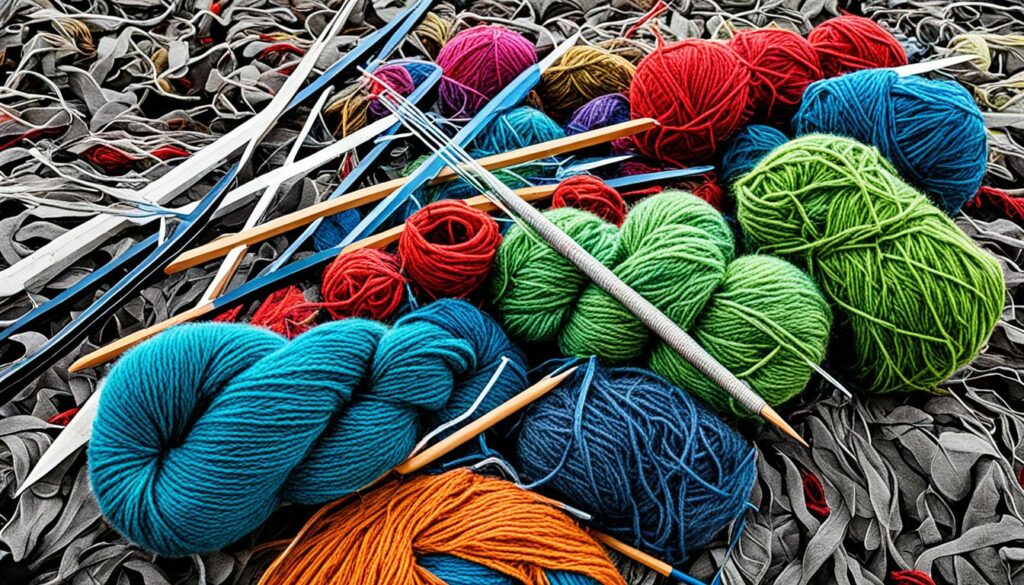
Choosing between wool yarn and acrylic yarn ultimately comes down to personal preference and the requirements of your project. By considering the advantages and disadvantages of each, you can select the yarn that best suits your needs, budget, and desired outcomes.
Differences Between Acrylic and Wool Yarn
When it comes to choosing yarn for your projects, understanding the differences between acrylic and wool yarn can help you make an informed decision. Acrylic yarn is made from synthetic fibers, while wool yarn comes from animals such as sheep or alpacas. Let’s explore the characteristics, breathability, durability, and care requirements of these two types of yarn.
Characteristics:
Acrylic yarn is known for its softness and smooth texture. It is often chosen for its affordability and wide range of vibrant colors. On the other hand, wool yarn has a natural warmth and elasticity that can enhance the drape of your projects. It is also available in various textures, from fluffy to fine.
Breathability:
When it comes to breathability, wool yarn has the upper hand. It can regulate body temperature by wicking away moisture and allowing air to circulate, making it suitable for both warm and cold climates. Acrylic yarn, on the other hand, is less breathable and may feel less comfortable against the skin, particularly in warmer weather.
Durability:
Wool yarn is generally more durable than acrylic yarn. Its natural fibers are resilient and have better shape retention, making it a great choice for projects that require longevity. Acrylic yarn, while not as durable, can still withstand regular wear and washing, making it suitable for everyday items.
Care Requirements:
Compared to wool yarn, acrylic yarn is easier to care for. It can be machine washed and dried without losing its shape or softness. On the other hand, wool yarn requires more delicate care. It is recommended to hand wash wool items with a gentle detergent and reshape them while drying to maintain their integrity.
| Acrylic Yarn | Wool Yarn | |
|---|---|---|
| Characteristics | Soft and smooth texture, wide range of colors | Natural warmth, elasticity, various textures |
| Breathability | Less breathable, can feel uncomfortable in warmer weather | More breathable, regulates body temperature |
| Durability | Less durable, but can withstand regular wear and washing | More durable, better shape retention |
| Care Requirements | Machine washable and dryable | Hand wash with gentle detergent, reshape while drying |
Ultimately, the choice between acrylic and wool yarn depends on your project’s specific needs and your personal preferences. Consider factors such as breathability, durability, and care requirements to select the yarn that will best suit your project.
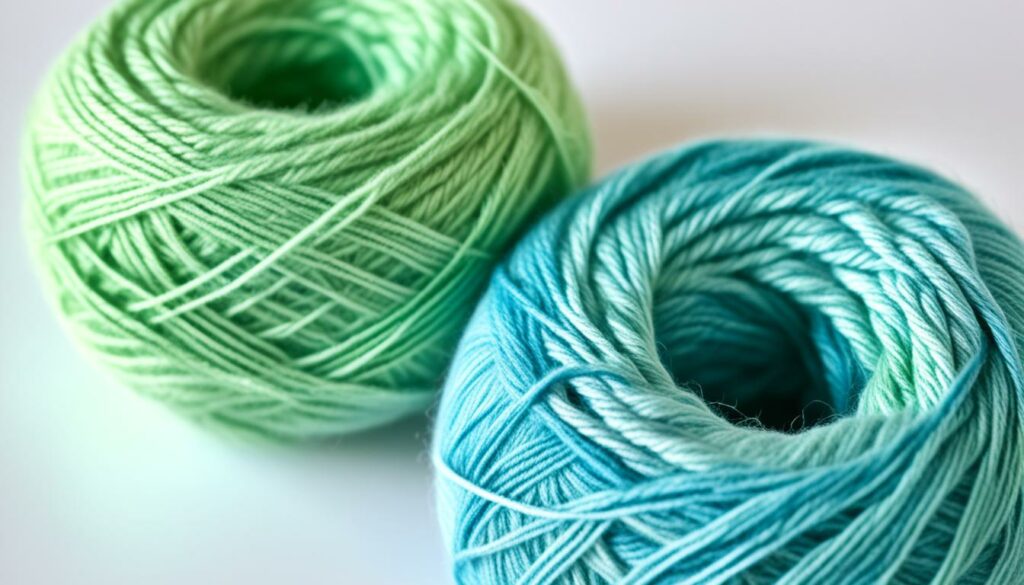
Choosing Acrylic or Wool Yarn for Different Projects
When it comes to choosing between acrylic and wool yarn, the decision largely depends on the specific project you are working on. Each type of yarn offers unique characteristics and benefits that can enhance the outcome of your craft. Let’s explore the suitability of acrylic and wool yarn for different projects to help you make an informed choice.
Acrylic Yarn for Socks
Acrylic yarn is often the preferred choice for knitting socks due to its exceptional warmth and insulation properties. Socks made with acrylic yarn help keep your feet cozy and comfortable, making them perfect for colder climates. Additionally, acrylic yarn is durable and can withstand frequent wear and washing, ensuring your socks will last for a long time.
Wool Yarn for Sweaters
When it comes to sweaters, wool yarn is a popular option for a reason. Wool is known for its breathability and superior insulating properties, making it ideal for creating cozy and warm sweaters. Wool yarn has excellent shape retention, ensuring your sweaters maintain their structure and fit over time. With proper care, wool sweaters can become cherished wardrobe staples.
Wool-Acrylic Blends
If you’re seeking a balance between the durability of wool and the affordability of acrylic, consider wool-acrylic blends. These yarns combine the best of both materials, offering the warmth and insulating properties of wool with the cost-effective nature of acrylic. Wool-acrylic blends are versatile and can be used for various projects, such as hats, scarves, and blankets.
When choosing between acrylic and wool yarn, it’s essential to consider the desired characteristics and intended use of your project. Whether you’re creating socks or sweaters, or opting for a blend, understanding the unique properties of each yarn can help you achieve the best results.
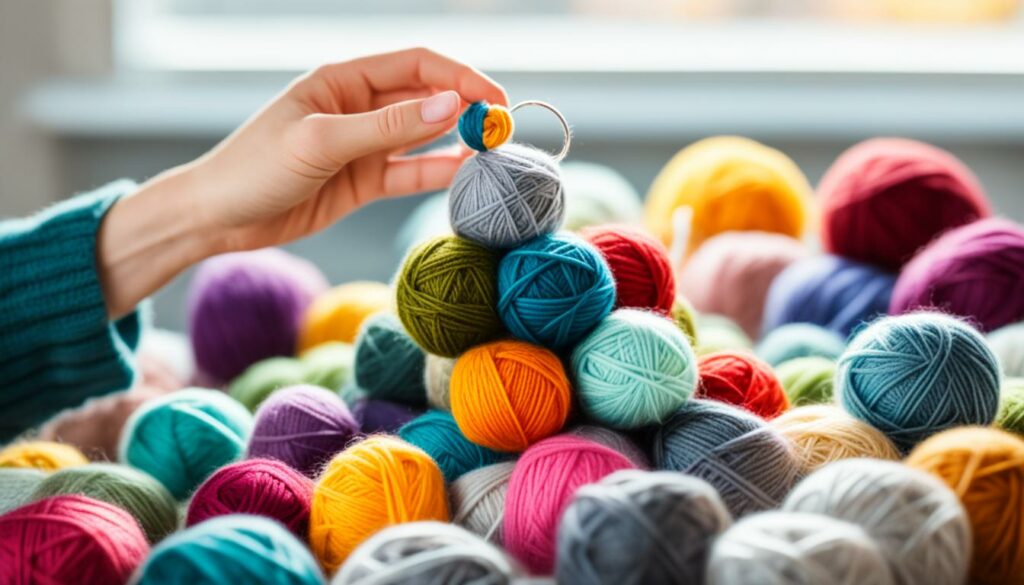
| Project | Acrylic Yarn | Wool Yarn | Wool-Acrylic Blend |
|---|---|---|---|
| Socks | Provides warmth and insulation | Not suitable for socks | Not suitable for socks |
| Sweaters | Not suitable for sweaters | Offers breathability and insulation | Offers breathability and insulation |
| Other Projects | Various options available | Can be used for various projects | Versatile for various projects |
As highlighted in the table, the choice between acrylic and wool yarn depends on the project at hand. Acrylic yarn is ideal for socks, while wool yarn shines in sweaters. If you’re open to exploring blends, wool-acrylic blends offer a practical compromise. Take into account the desired characteristics of your project and choose the yarn that best meets your needs.
The Financial Accessibility of Yarn
When it comes to choosing yarn for your crafting projects, the cost can play a significant role in determining its accessibility. Synthetic yarns, such as acrylic, often offer a more affordable option compared to natural fiber yarns like wool. This affordability allows crafters with limited budgets to fully engage in the world of fiber crafts.
The affordability of synthetic yarns not only makes them accessible to a wider range of craft enthusiasts but also contributes to diversity and inclusivity in crafting communities. Crafters from various income levels can now explore their creativity and express themselves through their craft projects without breaking the bank.
However, it is crucial to consider the sustainability aspect when examining the cost of yarn. While synthetic yarns may be more affordable upfront, they are often derived from petroleum, a non-renewable resource. This raises important questions about the long-term environmental impact of using synthetic yarns.
In recent years, there has been a growing movement towards exploring eco-friendly alternatives to synthetic yarns. Crafters are seeking yarn options that strike a balance between affordability and sustainability. This shift in focus aims to ensure that yarn remains financially accessible while also reducing its ecological footprint.
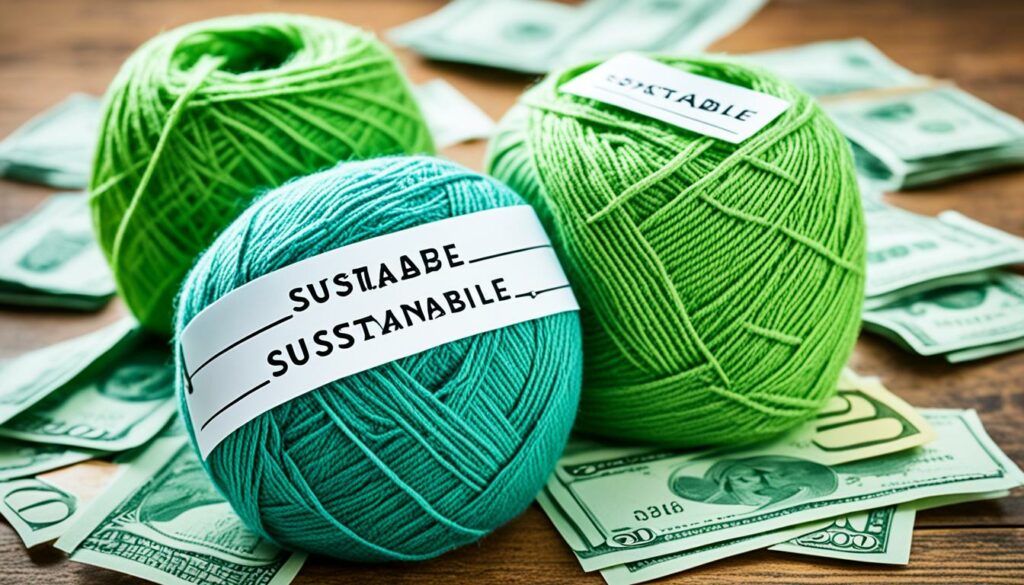
In crafting communities, discussions about the financial accessibility of yarn should be part of wider conversations about diversity, inclusivity, and sustainability. By addressing these topics, we can foster a more inclusive and environmentally conscious crafting community.
The Affordability of Synthetic Yarns
Synthetic yarns, such as acrylic, offer an affordable option for crafters of all backgrounds. Their lower price point allows individuals with limited budgets to pursue their crafting hobbies without financial strain. This affordability factor opens up opportunities for more individuals to engage in the joy of creating with yarn.
Additionally, the affordability of synthetic yarns enables craft enthusiasts to experiment with various projects and techniques without the fear of wasting expensive materials. This freedom to explore different aspects of fiber crafts is essential for personal growth and skill development within crafting communities.
Diversity and Inclusivity in Crafting Communities
The financial accessibility of yarn plays a crucial role in promoting diversity and inclusivity within crafting communities. When yarn options are affordable, individuals from different socioeconomic backgrounds can participate and contribute to the community.
By creating a space where everyone can access and enjoy yarn crafting, diversity flourishes. Crafters bring their unique perspectives, experiences, and artistic styles to the table, enriching the overall tapestry of the crafting community.
Exploring Sustainable Alternatives
While synthetic yarns are more affordable, it is essential to consider their environmental impact. As crafters, we have a responsibility to explore sustainable alternatives that offer both affordability and eco-friendliness.
Natural fiber yarns, such as organic cotton or sustainably sourced wool, provide options for those seeking more sustainable yarn choices. These alternatives offer the opportunity to support environmentally conscious practices while still enjoying the creative process.
“By addressing financial accessibility and sustainability, we can create a more inclusive and environmentally conscious crafting community.”
| Factors to Consider | Acrylic Yarn | Wool Yarn |
|---|---|---|
| Cost | Affordable | Higher price range |
| Sustainability | Derived from petroleum | Natural and renewable resource |
| Diversity | Accessible to crafters from diverse income levels | May be less accessible due to higher cost |
| Inclusivity | Allows a wide range of crafters to participate | May limit participation for some crafters |
As we continue to explore the financial accessibility of yarn, it is vital to strike a balance between affordability and sustainability. By considering the environmental impact, supporting diverse voices, and fostering inclusive crafting communities, we can create a space where everyone can express their creativity and contribute to the vibrant world of yarn crafting.
Tips for Identifying Mystery Yarn
If you have a ball of mystery yarn in your stash, we can help you uncover its secrets. Here are some tips to help you identify the weight, length, and fiber content of your mystery yarn.
Determining Yarn Weight
One way to determine the weight of your mystery yarn is by using the wraps per inch method. Take a ruler or a tool specifically designed for measuring wraps per inch and wrap the yarn snugly around it. Count the number of wraps within an inch and refer to a yarn weight chart to find the corresponding weight category.
Measuring Yarn Length
To measure the length of your mystery yarn, you can create a sample by wrapping the yarn around a ruler for a specific number of inches and then weighing it. Divide the weight of the sample by its length in inches to calculate the weight per inch. Multiply this value by the total number of inches in your mystery yarn to estimate the total yardage.
Identifying Fiber Content
To determine the fiber content of your mystery yarn, there are several tests you can try:
- Sniff test: Smell the yarn to detect any distinct odors that can indicate the presence of certain fibers, such as wool or acrylic.
- Burn test: Take a small snippet of yarn and carefully burn it. Observe the flame, smell, and residue to identify the fiber content. Note that this test should be performed with caution and in a safe environment.
- Dissolve test in bleach: Place a small piece of the yarn in a small dish with bleach. If the yarn dissolves, it is likely made of a protein-based fiber such as wool. If the yarn remains intact, it may contain synthetic fibers like acrylic.
- Visual inspection: Examine the yarn closely for visual clues such as its texture, sheen, and overall appearance. Natural fibers like wool often have more variation and irregularities compared to synthetic fibers.
By using these tips, you can unravel the mysteries of your mystery yarn and gain a better understanding of its weight, length, and fiber content.
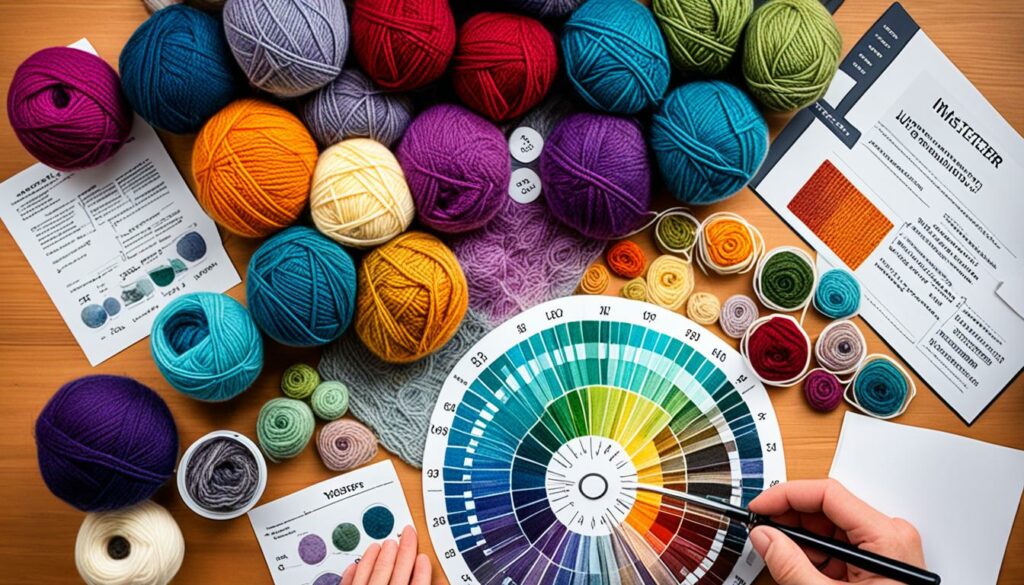
Evaluating the Value and Durability of Acrylic Yarn
When it comes to evaluating the value of acrylic yarn, durability is a crucial factor to consider. While acrylic yarn offers affordability and a wide range of color options, its durability may not match that of natural fibers like wool. Acrylic yarn is prone to wear and tear with extended use, which can result in issues such as pilling, fading, stretching, and shedding.
Wear and tear on acrylic yarn: With regular wear and washing, acrylic yarn may start to show signs of wear and tear. Pilling, the formation of small balls of fiber on the fabric surface, is a common occurrence with acrylic yarn. This can affect the overall appearance and smoothness of the knitted or crocheted item.
To ensure the longevity of acrylic yarn projects, it is essential to follow proper care requirements. Acrylic yarn should be washed in cool or lukewarm water using a gentle detergent. Avoid using high temperatures or excessive agitation, as this can cause the yarn to stretch and lose its shape.
Care requirements for acrylic yarn: Proper care is essential to maintaining the quality and durability of acrylic yarn. Here are some care tips to keep in mind:
- Hand-wash or machine wash on a gentle cycle with cool or lukewarm water.
- Use a mild detergent specifically designed for delicate fabrics.
- Avoid using bleach or fabric softeners, as they can damage the fibers.
- Do not wring or twist the yarn when drying; instead, gently squeeze out excess water and lay it flat to air dry.
When evaluating the value of acrylic yarn, it’s important to consider both its initial affordability and its long-term durability. While acrylic yarn may be a budget-friendly choice, it may require more frequent replacements due to wear and tear. This could impact the overall cost-effectiveness of using acrylic yarn for certain projects.
Ultimately, the choice between acrylic and other yarn types depends on the specific project requirements and personal preferences. By weighing the benefits and drawbacks of acrylic yarn and understanding its care requirements, crafters can make informed decisions on whether acrylic yarn is the right choice for their projects.

Conclusion
In conclusion, when choosing between acrylic and wool yarn, it’s important to consider a few key factors. First, think about the specific requirements of your project, such as the desired level of durability, insulation, and breathability. Second, take into account your personal preferences, including how you prefer the texture and feel of the yarn. Lastly, consider your budget and the overall affordability of the yarn.
Acrylic yarn offers several advantages, including its affordability, easy maintenance, and wide range of color options. However, it may not be as breathable or sustainable as wool yarn. On the other hand, wool yarn provides excellent durability, insulation, and shape retention, but it requires special care and tends to be more expensive.
By understanding the properties and characteristics of both acrylic and wool yarn, crafters can make informed decisions and choose the most suitable yarn for their projects. Whether you prioritize affordability and convenience or durability and natural fibers, selecting the right yarn is essential for achieving the desired results in your crafting endeavors.
